

LOVEBIRDS FOR SALE
We have all type of Lovebirds for sale. We breed over 500 pairs of lovebirds, making sure we have every color available there is. We supply wholesale and retail.
We can Deliver To any state via USPS or Delta Airlines.
For more info Call: 813-598-1207
Love Bird Colors: Rarest to Most Common
In the wild, lovebirds are only green, though some have various different colors on their upper body and head. All lovebirds are a species native to Africa. However, some feral lovebirds exist in the United States, due to pets or other domestic lovebirds escaping captivity.
Today domestic and feral lovebirds come in almost every color thanks to years of breeding. Many lovebirds are not one solid color. Instead, they contain many different shades, which makes them all the more beautiful. In this article, we will examine some of the rarest and most common colors of lovebirds in the world.
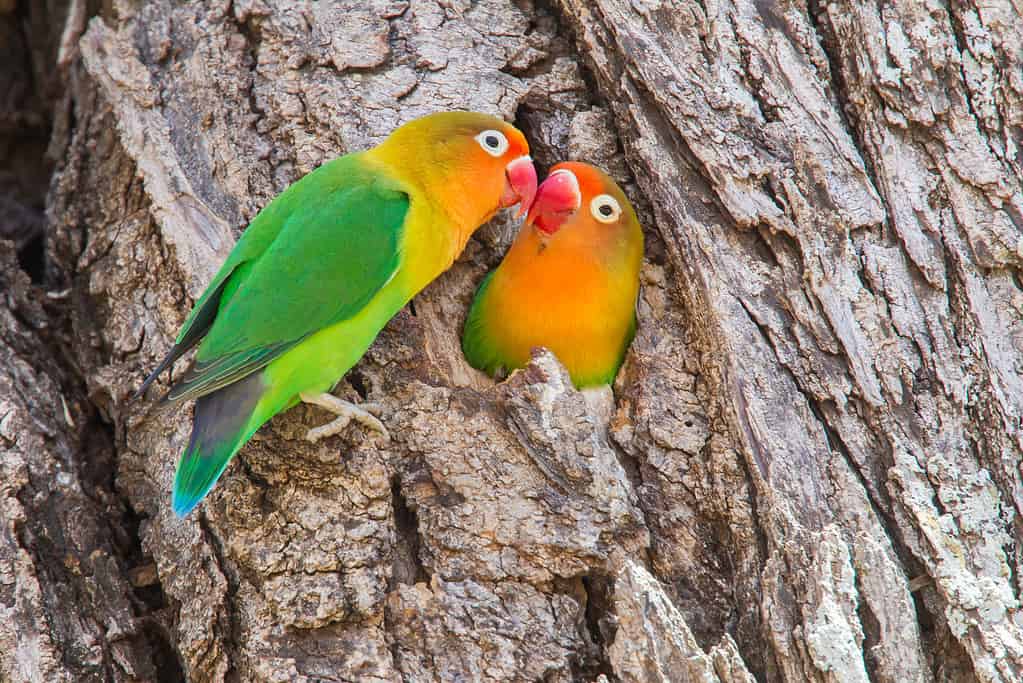
Fischer’s lovebirds are a wild-type species of lovebird with brilliant coloring.
©Danita Delimont/Shutterstock.com
Albino
Not to be confused with pied or grey-headed lovebirds, true albinoism in birds is actually very rare. Even domestic lovebirds that have all-white feathers are not necessarily albino.
According to the National Audubon Society, birds with pale feathers and naturally colored eyes have a condition known as leucism. Partial leucism can result in a “pied” appearance.
On the other hand, albino birds lack the natural pigment known as melanin. This results in an all-white color and red or pink eyes. One reason true albino birds are so rare is that they have impaired vision, making it difficult for them to survive to adulthood.
Violet
Violet is not a color that occurs naturally in wild lovebirds. However, according to Pet Keen, the violet gene is a dominant trait in lovebirds, meaning that only one parent needs to have this gene to produce violet offspring. Still, the gene cannot be split, meaning that the offspring will either have it or not.
Violet lovebirds are beautiful domestic creatures with colors ranging from light lavender to deep purple. Peach-faced lovebirds bred to have violet coloring may be pied or have all-white faces and chests. Domestic black-masked lovebirds may maintain their black faces and be bred to have violet bodies.
Blue
Blue is a naturally occurring color in wild lovebirds. However, it is typically only present in the rump and tail feathers of species such as the peach-faced and Fischer’s lovebirds. Thanks to mutations and breeding, domestic lovebirds can be entirely blue.
For example, according to Parrot Junkie, mutations from breeding the peach-faced lovebirds can create a variety known as the Dutch blue. These lovebirds have white faces and blue-green bodies. In Fischer’s lovebirds, a mutation exists that creates creatures that are blue across their entire bodies.
White/Gray
One of the less common species of wild lovebirds is called the gray-headed lovebird or Madagascar lovebird. These birds display an example of sexual dimorphism.
Sexual dimorphisms refer to differences in the appearance of a species of animal based on their sex (other than the typical difference in sexual organs.) For example, in gray-headed lovebirds, only the males have a gray upper body, neck, and head. Females are almost entirely green.
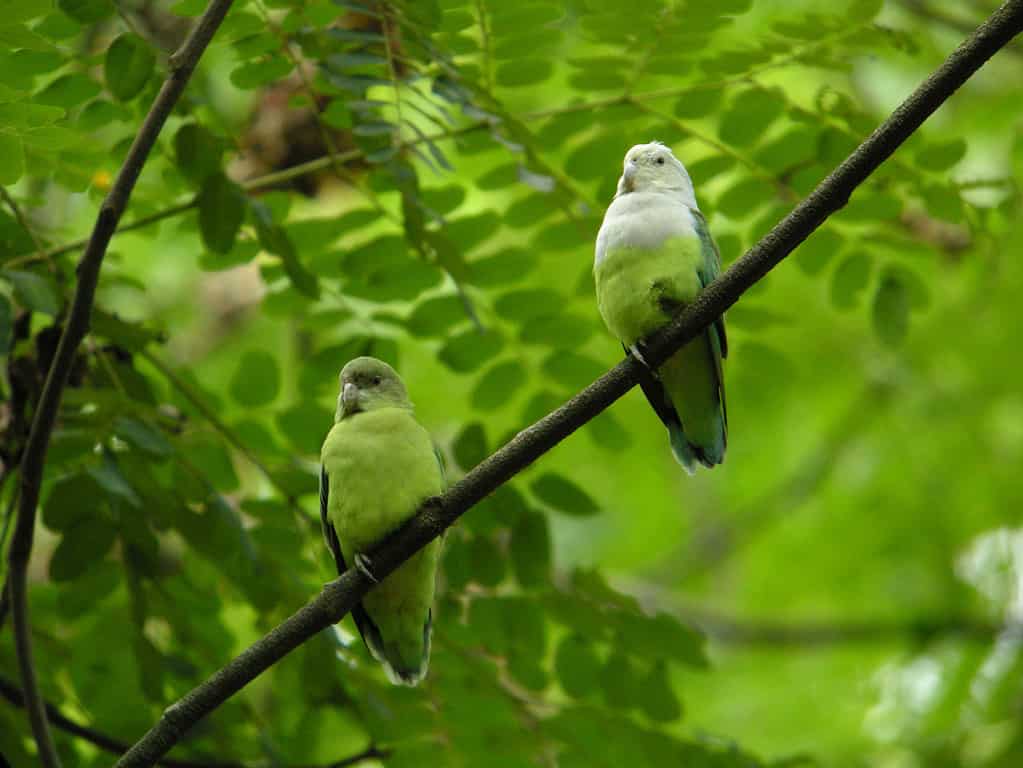
Only male gray-headed lovebirds have a grey upper body, head, and neck.
Male gray-headed lovebirds’ gray coloring can appear close to white in color. In the wild, several species of lovebirds, such as the Fischer’s lovebird, Lillian’s lovebird, and black-cheeked lovebirds have white eyerings.
Domestic lovebirds are sometimes bred to have white patches of color. For example, the “pied” color mutation seen in both peach-faced and Fischer’s lovebirds refers to birds with irregular patches of color and white across the body.
Black
Several species of lovebirds have naturally occurring black coloring. They include the black-collared lovebird, black-winged lovebird, black-cheeked lovebird, and yellow-collared lovebird.
Notably, none of these species are solid black in color. Domestic lovebirds typically aren’t solid black in color either, likely because most pet owners hope for lovebirds with vibrant plumage.
Rosy-Pink/Peach
It’s not uncommon to see a lovebird with rosy pink or peach coloring. In fact, this color gives its name to a species known as the rosy-faced or peach-faced lovebird.
In the wild, these beautiful creatures are typically green with peach or rose-colored faces and blue rump feathers. They are frequently bred as pets and have undergone a number of genetic color mutations. Peach-faced lovebirds are the most common of their species kept as pets.
Red/Bright Orange
Red and bright orange are other common colors to see on the face and neck or chest of wild lovebirds. Several species typically have red or orange coloring. They include the Fischer’s lovebird, Lillian’s lovebird, and black-cheeked lovebird.
Red or orange coloring may also be an aspect of sexual dimorphism in some wild lovebird species. For example, in black-winged lovebirds, males have a bright red forehead and crown, while females are entirely green in their plumage.
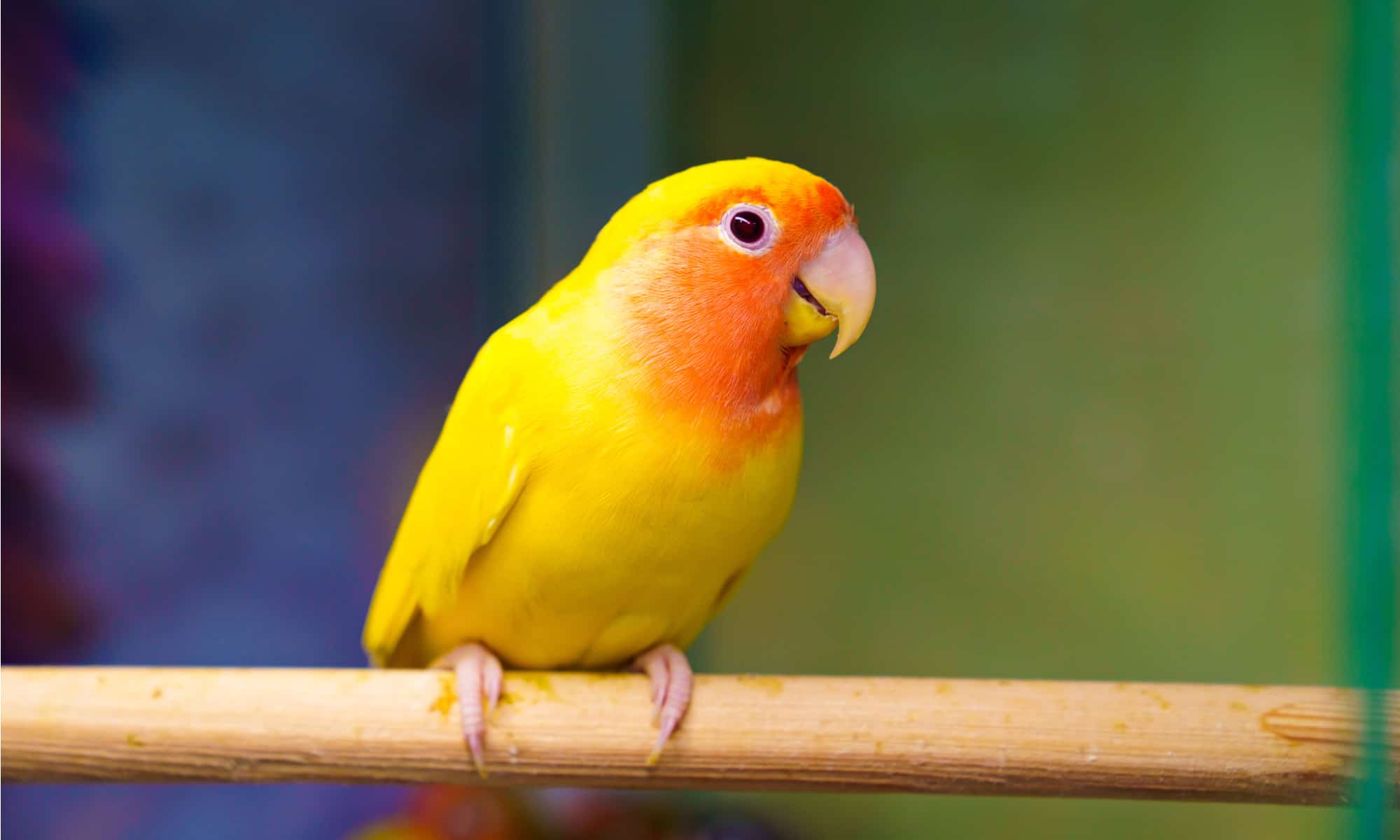
Lutino lovebirds have more yellow plumage than typically found in the wild, often with orange or red faces
BUY NOW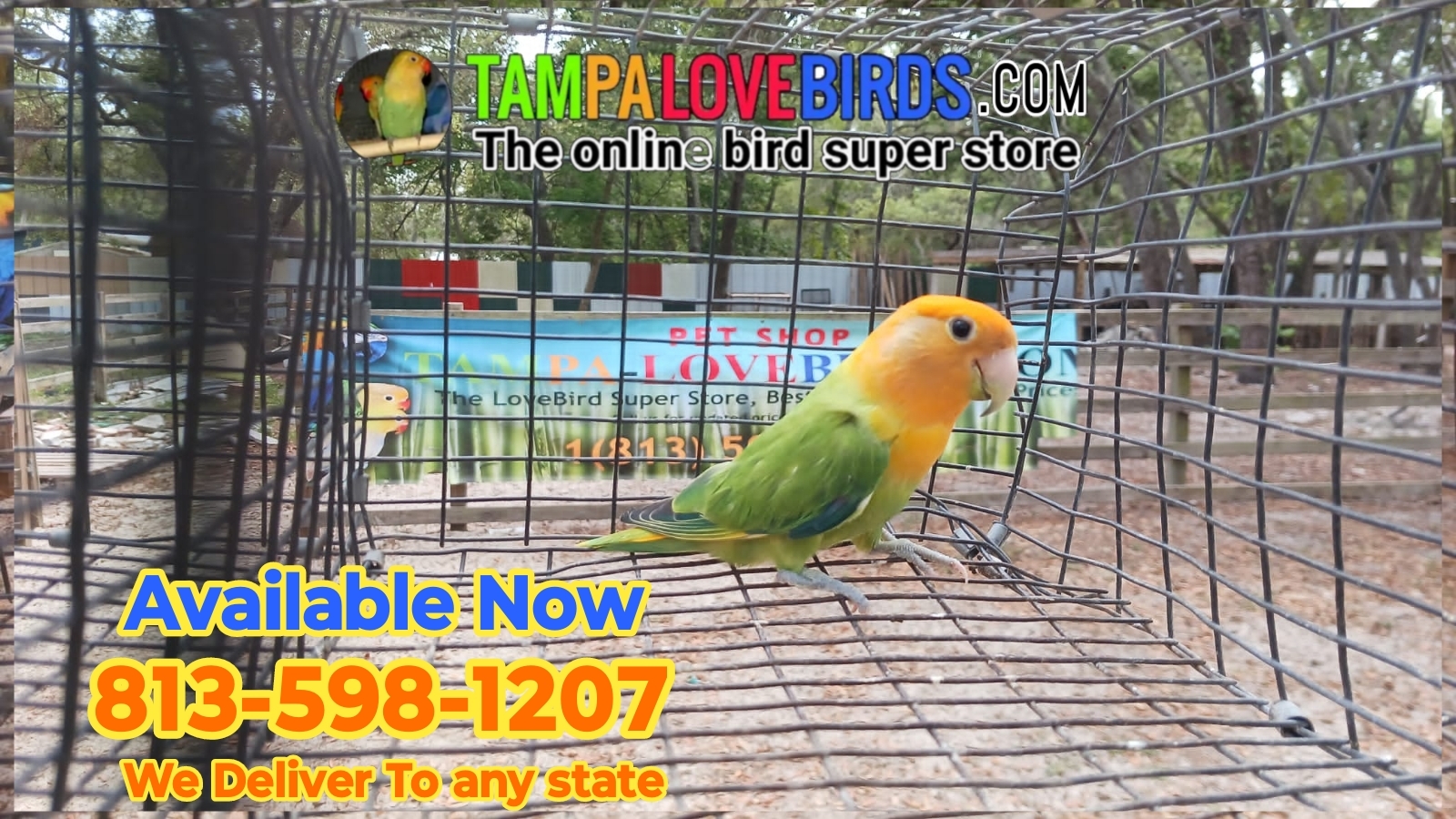
Yellow
Yellow-collared lovebirds are a popular type of pet lovebird. In the wild, these creatures typically have a dark green lower body and yellow “collar” around their neck. Several other species, such as the Fischer’s lovebird, contain golden yellow coloring around the throat as well.
While some wild lovebirds naturally have a yellow coloring, breeders sometimes make “lutino” lovebirds as well. A lutino is a bird with more yellow in the plumage than is typical for its species, according to Oxford Languages. The lutino lovebird is actually a mutation of the peach-faced lovebird species.
BUY NOW
Green
Green is one of the most common colors seen in lovebirds. This isn’t all that surprising, considering lovebirds are actually a type of parrot. In fact, wild-type lovebirds almost always have green bodies, though they may have different colors on their head and upper body.
Parrot Junkie writes that green was the lovebird’s original color before genetic mutations occurred and humans began breeding them to create a variety of hues.
Naturally occurring lovebird colors range from light to dark green. However, a mutation from breeding rosy-faced lovebirds has created specimens with sea green or aqua-turquoise bodies
Why Choose Us?
We have the biggest Lovebird variation available for sale in the market, we count with over 400 pairs of Breeding lovebirds. We Also ship any state in the United States. That way you can always buy your dream lovebird pet even if you live in a different state. All of our baby lovebirds are Handfed to ensure that you don't experience any aggressive behavior with them. We also provide a large variety of services that you can use at your convenience that will make your life more easy like for example not only hand feeding the lovebird for you but also we can semi train the lovebird at your convenience to make it more friendly and sociable around humans. And with us you will make sure you buy the lovebird of your dreams because with our large variation of colors you will find the one you have always imagine.
About Us
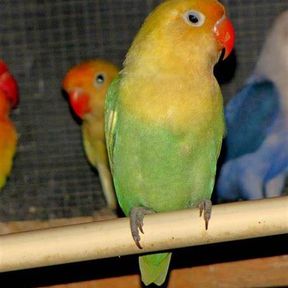
Tampa Lovebird LLC
Corporation
We are a large lovebird Aviary In Tampa Florida that was incorporated in 2014 but we been breeding lovebirds since 2006. We count with over 400 pairs of lovebirds in our aviary. We have a retail store here in Tampa Florida and we will love to provide you the best service and the best lovebirds at the best price.